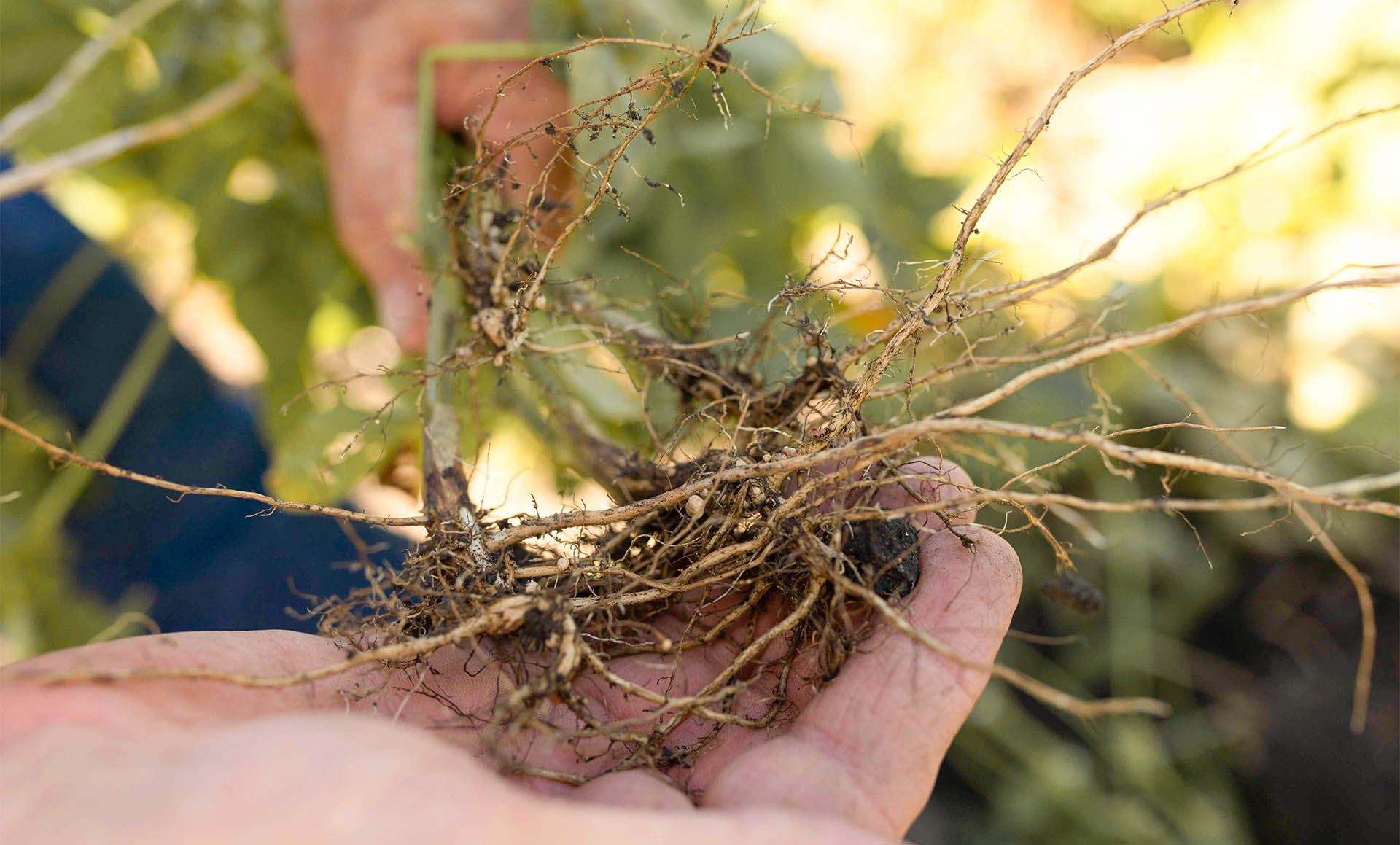
(Photo: Iowa Soybean Association / Joclyn Bushman)
Soil sample now to manage SCN in 2025
September 26, 2024 | Kriss Nelson
Soybean Cyst Nematode robs Iowa soybean farmers of more than 50 million bushels annually.
To effectively manage SCN for the 2025 growing season, it’s time to arm yourself against the pest battle by considering soil sampling.
Greg Tylka, Morrill Professor and co-director of the Iowa Soybean Research Center at Iowa State University, suggests farmers should sample fields where they will grow soybeans next year.
“Knowing the SCN situation in fields where soybeans will be grown in 2025 allows farmers to develop an active defense plan to minimize soybean yield loss,” says Tylka. “There are hundreds of SCN-resistant soybean varieties for farmers to consider growing in SCN-infested fields in 2025 and numerous nematode-protectant seed treatments may also provide yield protection. Staring the battle against SCN this fall will pay dividends in the form of higher soybean yields in 2025.”
SCN sampling guidelines
Tylka provided these sampling guidelines:
- Using a soil probe, not a spade, collect soil cores, which should be about 8 inches deep.
- Collect 15 to 20 soil cores from every 20 acres. The more soil cores collected from smaller areas, the more accurate the results.
- Soil cores should be collected from agronomically logical areas or management zones in the fields.
- Combine all soil cores representing a sampling area and mix well, then pour the mixed soil into a soil sample bag or plastic bag.
- SCN samples can be submitted to Iowa State University’s Plant and Insect Diagnostic Clinic, Room 2445 of the Advanced Teaching and Research Building, 2213 Pammel Drive, Ames, Iowa 50011. For questions on submitting samples, call 515-294-0581 or email: pidc@iastate.edu. More information can be found visiting here.
- Private soil-testing labs can also process samples for SCN. Information on those labs can be found by visiting the SCN Coalition’s SCN state testing labs site.
If soil sampling for SCN in a field where corn was just harvested, soil cores can be gathered either between or within the rows. However, be cautious not to gather a soil probe full of corn stalks.
“I encourage farmers to sample fields of harvested corn in the fall that will be rotated to soybeans,” says Tylka.
SCN numbers can also be sampled after soybean harvest. In this case, soil cores must be gathered consistently between the rows or underneath where the row was located. There might be an increased chance of finding SCN under the old soybean rows, Tylka says.
“The results of soil samples collected after the soybean harvest will be more of a look back rather than a look forward,” says Tylka. “You can see what was there, which might help explain some disappointing soybean yields.”
Managing SCN
The first step to managing SCN is knowing if the pest is present in the field and at what levels, after receiving your fall soil sample results, managing SCN could be a “SNAP.”
Tylka encourages farmers to follow this acronym while making SCN management decisions for 2025 and beyond.
S: START using varieties with Peking resistance in SCN-infested fields. Seed companies have more than doubled the number of Peking-resistant varieties from 87 a year ago to 195.
N: NEVER grow Peking-resistant varieties twice in a row. Peking-resistant varieties will lose their effectiveness if overused.
A: ALWAYS grow varieties with PI 88788 resistance after growing Peking resistance.
P: PLANT corn every year after growing a SCN-resistant variety.
Farmers can also utilize a nematode-protectant seed treatment.
“Seed treatments have had variable effects among the different products and fields but at times have provided a significant yield boost,” says Tylka.
Harvest has just begun, so it is too early to determine the extent of yield losses caused by SCN. However, Tylka is concerned that the losses were significant.
“SCN is widespread and well-adapted to feeding on soybeans in Iowa,” he says. “Yes, 2024 was a wet growing season for much of Iowa and yes, SCN reproduces better and causes maximum yield loss in hot, dry soils, but one of the most dangerous things about the pest is that it can survive and thrive in a wide range of growing conditions, including water-logged soils.”
Farmers can find more information on how to arm themselves against the battle of SCN by visiting the checkoff-funded SCN Coalition or consulting with an Iowa Soybean Association research agronomist.
Back